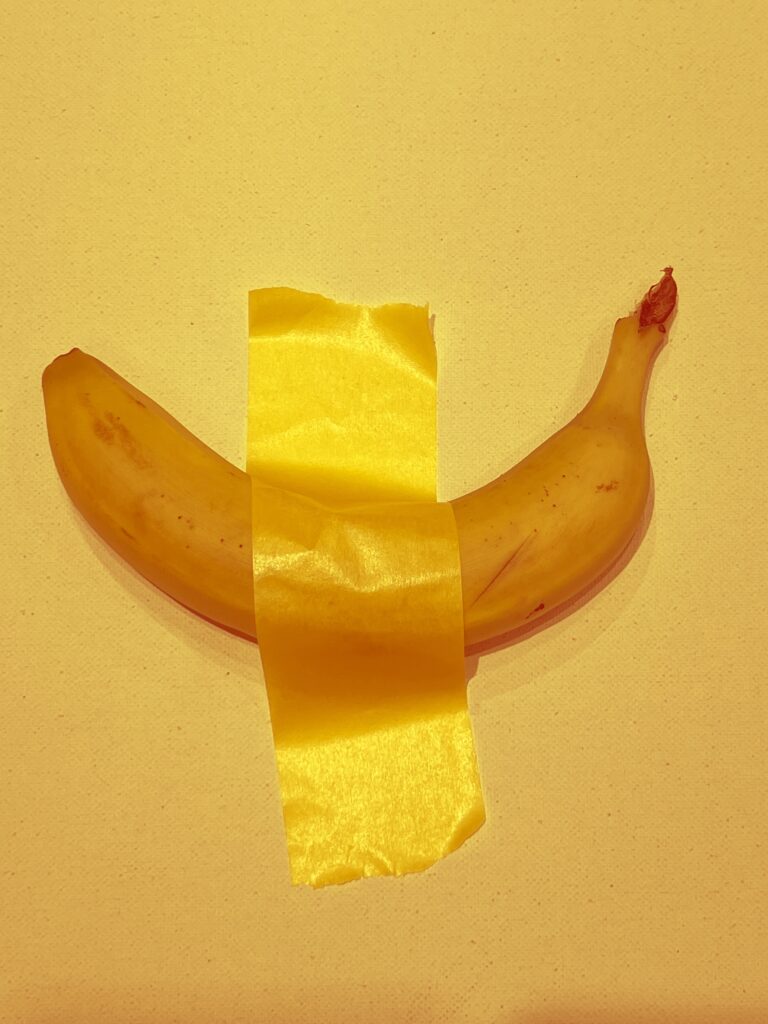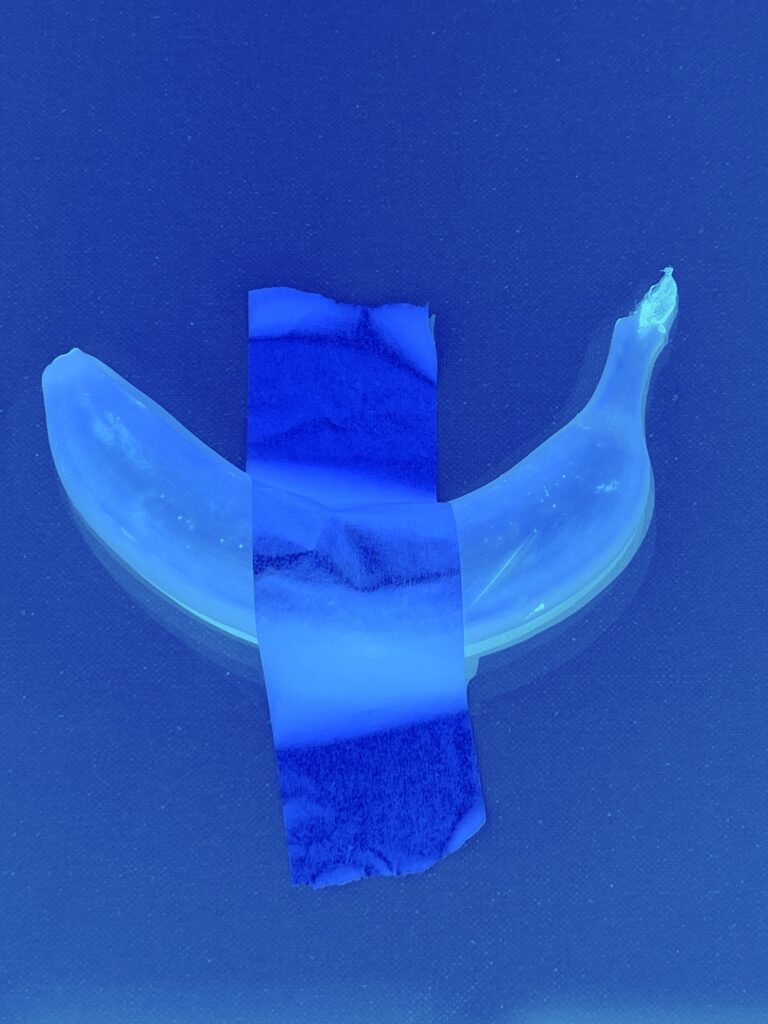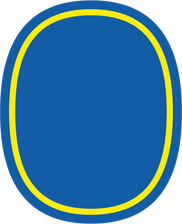
Trademark? BANANA! When Figurative Marks Aren’t Enough
Can a simple oval shape in blue and yellow be distinctive enough for EU trademark protection? The General Court says no – rejecting Chiquita’s mark for lack of distinctiveness.


Trademarks often face legal scrutiny, especially when relying on simple designs to convey a brand’s identity. This was evident in the case of Chiquita Brands LLC and its blue-and-yellow figurative mark, recently deemed ineligible for protection as an EU trademark by the General Court of the European Union (Judgment of the General Court in Case T-426/23 | Chiquita Brands v EUIPO – Compagnie financière de participation). Despite being associated with Chiquita’s broader branding, the court ruled that the mark lacked the necessary distinctiveness to qualify as a legally protectable trademark.
This case highlights the challenges of using geometric shapes and primary colors as the basis for a protectable trademark. Like peeling a banana, the court stripped the mark down to its fundamental components, ultimately concluding that it failed to function as a distinctive indicator of the origin of fresh fruits. This article explores the court’s reasoning, Chiquita’s defense and the broader implications for trademark owners.
Facts of the case
In 2008, Chiquita Brands registered a blue-and-yellow geometric shape as an EU trademark, covering multiple goods, including fresh fruits and bananas in particular. The design featured a blue oval-like shape bordered by thin yellow and blue lines.

In 2020, the Compagnie financière de participation applied to invalidate the mark, arguing that it lacked inherent distinctiveness. The EUIPO agreed, declaring the mark invalid in 2023 for fresh fruits, including bananas. Chiquita appealed, but the General Court upheld the invalidation, finding the mark failed to meet the criteria for EU trademark protection.s EUIPO erklärte die Marke 2023 für frische Früchte, einschließlich Bananen, für ungültig, da die Kriterien für eine Unionsmarke nicht erfüllt wurden. Chiquita legte Berufung ein, doch das Europäische Gericht bestätigte die Entscheidung.
Chiquita presented two core defenses:
1. Inherent Distinctiveness
Chiquita contended that the Board of Appeal erred in assessing the mark’s distinctiveness based on its shape and color scheme:
a) Shape
Chiquita argued that the mark was not a simple oval but a unique “ovaloid” design consisting of three layered components: an inner blue ovaloid, bordered by a thin yellow ovaloid, and finally surrounded by a thin blue ovaloid. Chiquita likened this combination to a racetrack, asserting that the distinct configuration added originality and strengthened the mark’s inherent distinctiveness.
b) Color Scheme
The company claimed that the interplay of the three color elements — “blue (thin) – yellow (thin) – blue (broad)” — within the geometric shape enhanced its distinctiveness. While acknowledging the frequent use of blue and yellow in the fresh fruit sector, Chiquita argued that this specific arrangement distinguished the mark from industry norms.
2. Acquired Distinctiveness
Chiquita further asserted that the mark had gained distinctiveness through extensive and longstanding use across the EU. It submitted evidence, including sales data, marketing campaigns and consumer surveys, to demonstrate that the mark was widely recognized as part of its brand identity.
Decision of the Court
The General Court rejected both arguments, focusing on the mark’s simplicity and the inadequacy of the evidence provided.
1. Lack of Inherent Distinctiveness
a) Shape
The court noted that a geometric shape can only function as a trademark if it includes elements capable of differentiating it from other similar shapes and attracting consumer attention.
The contested mark, described as a minor variation of an oval, consisted of three overlapping components of identical shape but differing size. In that context, the precise description of the geometric shape of that mark was deemed irrelevant to the assessment of its inherent distinctiveness.
The court ruled that this configuration lacked any unexpected or memorable features. It further highlighted that oval labels are commonly used in the fresh fruit sector because they are practical for labeling curved surfaces like bananas. Consequently, the mark was deemed decorative rather than distinctive.
b) Color Scheme
The court stated that abstract color combinations, including blue and yellow, are generally not inherently distinctive unless presented in an unusual or unique way. In this case, the blue-and-yellow combination was seen as commonplace in the fresh fruit industry.
The court found that the colors, combined with the oval shape, lacked complexity or originality, rendering the mark incapable of distinguishing Chiquita’s goods from those of competitors.
2. Insufficient Evidence of Acquired Distinctiveness
The court also dismissed Chiquita’s claim of acquired distinctiveness for the following reasons:
Use with Additional Elements: The evidence submitted was insufficient to prove that the contested mark, as registered, had acquired distinctiveness. The examples showed the mark only in combination with other elements, such as the word “Chiquita” or other figurative elements, and did not show the contested mark in isolation.
Geographic Scope: The evidence submitted related primarily to four EU Member States (Belgium, Germany, Italy and Sweden). Without proof that similar recognition existed across the entire EU, the court deemed this insufficient to demonstrate EU-wide acquired distinctiveness.
Key takeaway
The Chiquita case underscores the difficulties of protecting simple figurative marks under EU trademark law. Geometric shapes and primary colors often fail to meet the distinctiveness requirements, particularly in industries where such designs are widely used.
The court emphasized the importance of industry norms as a criterion for fulfilling the requirements of “any distinctive character”, pointing out the prevalence of oval labels in the fresh fruit sector and the frequent use of blue and yellow in branding. These factors influenced the court’s conclusion that Chiquita’s mark did not stand out sufficiently from business practices.
For businesses, this case highlights the necessity of developing trademarks that transcend functional or decorative elements. A successful trademark must incorporate unique features that resonate with consumers and serve as a clear and distinctive indicator of origin.
The General Court’s decision serves as a cautionary tale for trademark owners relying on simple figurative marks. While Chiquita’s blue-and-yellow ovaloid (or however one chooses to describe its shape) is a recognizable element of the brand, it failed to stand on its own as an EU trademark.
This case demonstrates that trademarks must be not only visually appealing but also legally distinctive. Geometric shapes and simple color schemes may work as design elements, but they must go beyond the ordinary to achieve legal protection.
Picture: Regina Blumenröhr
Decision: Judgment of the General Court, T‑426/23, 13 November 2024
Please feel free to contact us if you have any questions.
Or read our articles on this topic “No Words, but Still Making a Mark – Lidl Defends Its Figurative Logo” and “Trademark Strategy: Lessons from Chiquita, Lidl and Walmart” here in our LBP Blog.
This article was also published in the ECTA Bulletin March 2025, page 66, see here („Trade Mark? BANANA! When Figurative Marks Aren’t Enough“).

Dietrich Blumenröhr
Patent Attorney